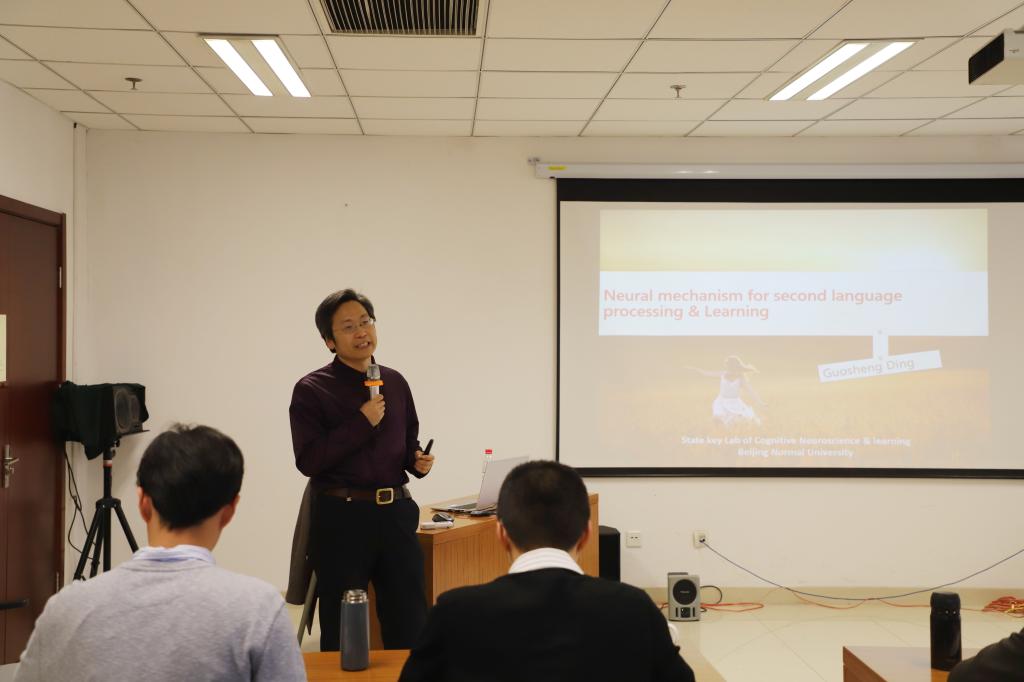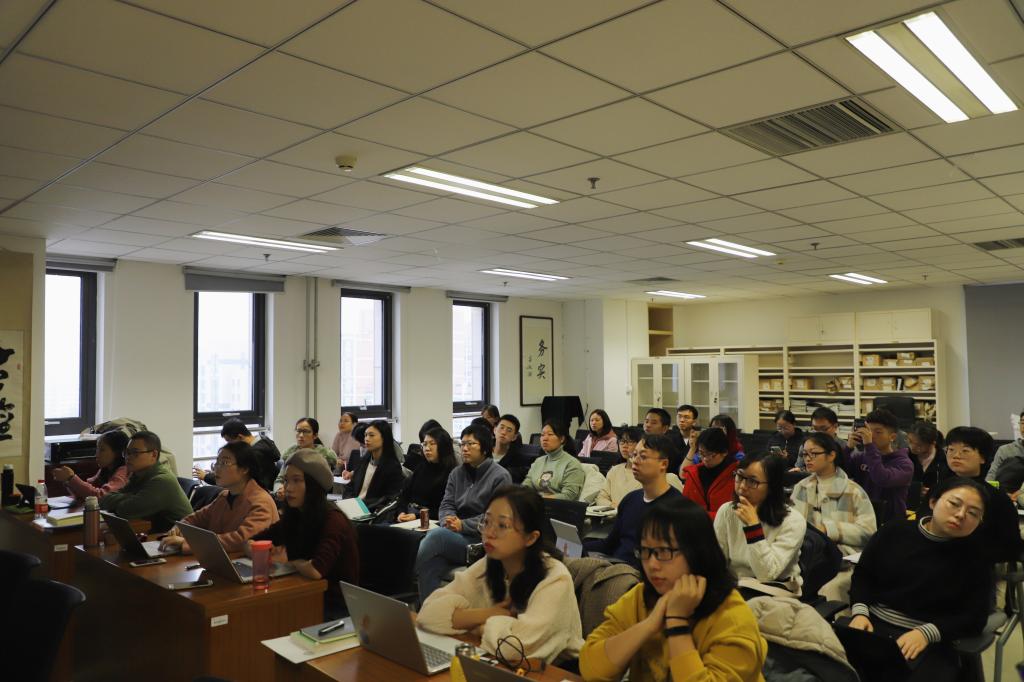On December 4, 2019, Professor Guosheng Ding from the State Key Laboratory of Cognitive Neuroscience and Learning at Beijing Normal University was invited to give an academic lecture entitled "The Neural Basis of Second Language Learning". This lecture, the eighth lecture of the "Language Recognition and Brain Science Lecture Series" of the Center, was chaired by Dr. Yanjun Wei, a researcher at the center. It attracted more than 50 teachers and students from both inside and outside the school.
The lecture revolved around the question "Does second language learning depend on a specific neural basis compared to mother tongue learning?" First, Professor Ding reviewed previous researches. Traditionally, bilingual studies have suggested that L1 processing and L2 processing share the same neural foundation. Then, Professor Ding introduced his team's meta-analysis research on second language learning, and the results showed that the top and bottom leaflets played a special role in second language processing and learning. This brain region always plays an important role in different types of bilinguals, and the subparietal lobules may be a key brain region for second language learning.
After the lecture, the teachers and students there actively asked questions about the lecture. Professor Ding shared his views and had a warm exchange with the teachers and students present.

